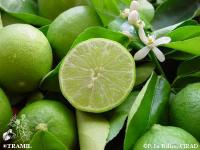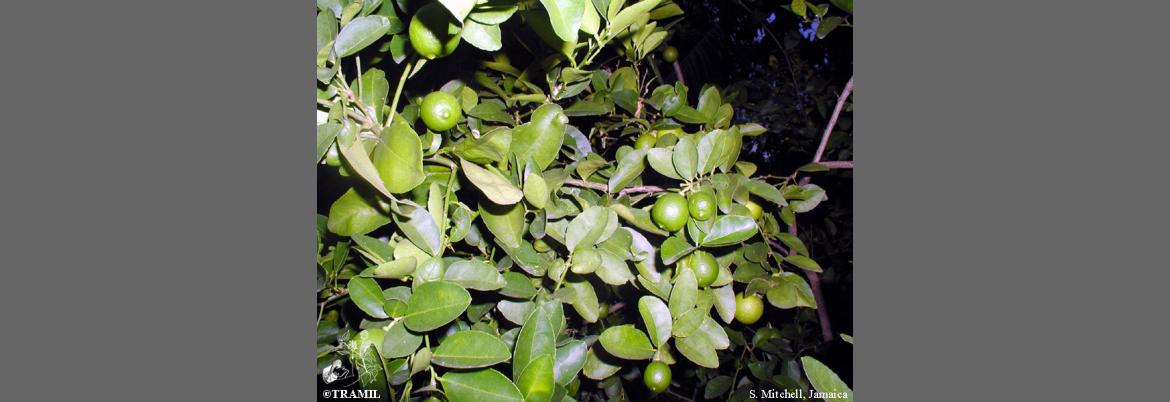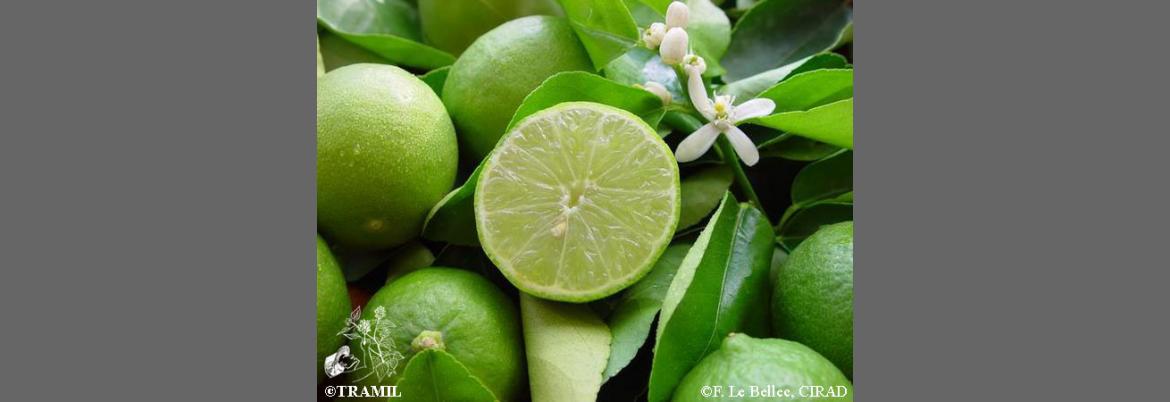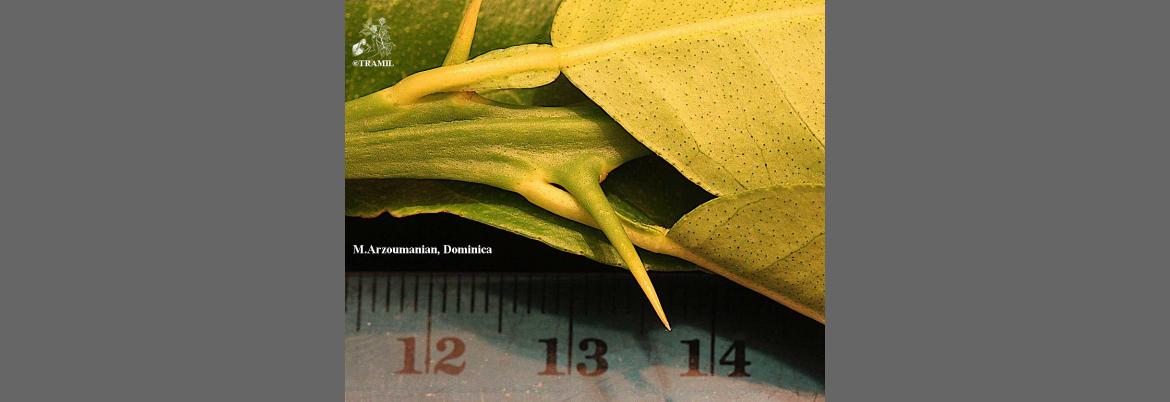1 WENIGER B, ROUZIER M, 1986 Enquête TRAMIL. Service Oecuménique d'Entraide SOE, Port au Prince, Haïti.
2 WENIGER B, 1987-88 Encuesta TRAMIL. enda-caribe, Santo Domingo, Rep. Dominicana.
3 LAGOS-WITTE S, 1988-89, 1996 Encuesta TRAMIL. Laboratorio de Histología Vegetal y Etnobotánica, Departamento de Biología, Universidad Nacional Autónoma de Honduras UNAH, Tegucigalpa, Honduras.
4 HERRERA J,1994 Encuesta TRAMIL (Costa atlántica). Laboratorio de Fitofarmacología, Departamento de Farmacología, Facultad de Salud, Universidad del Valle, Cali, Colombia.
5 HAY YO,1998 Enquête TRAMIL (St. Georges). Institut de Recherche pour le Développement IRD, Cayenne, Guyane.
6 EDOUARD JA, 1992 Enquête TRAMIL. Lycée agricole, Baie-Mahault, Guadeloupe.
7 CHARLES C, 1988 TRAMIL survey. Movement for Cultural Awareness MCA, Roseau, Dominica.
8 GERMOSEN-ROBINEAU L, GERONIMO M, AMPARO C, 1984
Encuesta TRAMIL. enda-caribe, Santo Domingo, Rep. Dominicana.
9 BENEDETTI MD,1994 Encuesta TRAMIL. Universidad de Puerto Rico, Mayagüez, Puerto Rico.
10 SolIs PN, Espinosa A, De Gracia J, Martínez L, Gupta MP, 2003 Encuesta TRAMIL (Emberá-Wounaann). Centro de Investigaciones Farmacognósticas de la Flora Panameña, Facultad de Farmacia, Universidad de Panamá, Panamá, Panamá.
11 WHO, 1991 Pautas para la evaluación de medicamentos herbarios WHO/TRM/91.4 (original inglés). Programa de Medicina Tradicional, OMS, Ginebra, Suiza.
12 EKUNDAYO O, BAKARE O, ADESOMOJU A, STAHL-BISKUP E, 1991 Volatile constituents of the leaf oil of Nigerian lime (Citrus aurantiifolia). J Essent Oil Res 3(2):119-120.
13 BEZANGER-BEAUQUESNE L, PINKAS M, TORCK M, 1986 Les plantes dans la thérapeutique moderne. 2 éd. Paris, France: Ed. Maloine.
14 DUKE JA, ATCHLEY AA, 1986 Handbook of proximate analysis tables of higher plants. Boca Raton, USA: CRC Press. p45.
15 SAUVAIN M, KODJOED JF, BERGRAVE SJ, BONNEVIE O, DEDET JP, 1986 Plantes fébrifuges en médecine traditionnelle en Haïti et en République Dominicaine et thérapie du paludisme. Rapport TRAMIL. ORSTOM, Cayenne, Guyane Française.
16 NOGATA Y, YOZA KI, KUSUMOTO KI, KOHYAMA N, SEKIYA K, OHTA H, 1996 Screening for inhibitory activity of Citrus fruit extracts against platelet cyclooxygenase and lipoxygenase. J Agric Food Chem 44(3):725-729.
17 CACERES A, GIRON L, ALVARADO S, TORRES MF, 1987 Screening of antimicrobial activity of plants popularly used in Guatemala for the treatment of dermatomucosal diseases. J Ethnopharmacol 20(3):223-237.
18 EBANA RU, MADUNAGU BE, EKPE ED, OTUNG IN, 1991 Microbiological exploitation of cardiac glycosides and alkaloids from Garcinia kola, Borreria ocymoides, Kola nitida and Citrus aurantiifolia. J Appl Bacteriol 71(5):398-401.
19 KOICHUSAKUL S, SATHITNIRAIMAI S, 1977 Studies of the effect of sour fruits on acid secretion in the stomach. Undergraduate special problem report. Fac Med (Siriraj Hosp) Mahidol Univ, Bangkok, Thailand.
20 DHAWAN BN, PATNAIK GK, RASTOGI RP, SINGH KK, TANDON JS, 1977 Screening of Indian plants for biological activity. VI. Indian J Exp Biol 15(3):208-219.
21 LAM L, ZHENG B, 1991 Effects of essential oils on glutathione S-transferase activity in mice. J Agric Food Chem 39(4):660-662.
22 EL KELTAWI N, MEGALLA S, ROSS S, 1980 Antimicrobial activity of some Egyptian aromatic plants. Herbal Pol 26(4):245-250.
23 ADESINA S, 1982 Studies on some plants used as anticonvulsants in Amerindian and African traditional medecine. Fitoterapia 53:147-162.
24 GUPTA M, 1987 Essential oil: a new source of bee repellents. Chem Ind (London) 5:161-163.
25 HARTMAN JG, LIMBIRD ILE, Eds., 1996 Goodman & Gilman Las bases farmacológicas de la terapéutica, 9a ed. México, México:Mc Graw-Hill Interamericana.
26 BALA S, GROVER IS, 1989 Antimutagenicity of some Citrus fruits in Salmonella typhimurium. Mutat Res 222(3):141-148.
27 PELLECUER J, 1995 Aromaterapia y toxicidad de los aceites esenciales. Natura Medicatrix 37(8):36-40.
28 Olmedo D, RODRIGUEZ N, ESPINOSA A, VASQUEZ Y, Gupta MP, 2005 Ensayo antimicrobiano de algunas especies con usos significativos TRAMIL-Centroamérica. Informe TRAMIL. Centro de Investigaciones Farmacognósticas de la Flora Panameña CIFLORPAN, Facultad de Farmacia, Universidad de Panamá, Panamá, Panamá.
29 MARTINEZ MJ, MOREJON Z, LOPEZ M, BOUCOURT E, FUENTES V, MORON F, 2005 Clases tóxicas agudas (CTA) de una decocción de corteza de fruto fresco de Citrus aurantiifolia (Christm.) Swing. Informe TRAMIL. Laboratorio Central de Farmacología, Facultad de Ciencias Médicas “Dr. Salvador Allende”, La Habana, Cuba.
30 MARTINEZ MJ, MOREJON Z, LOPEZ M, BOUCOURT E, FUENTES V, MORON F, 2005. Clases tóxicas agudas (CTA) de una decocción de hoja fresca de Citrus aurantiifolia (Christm.) Swing. Informe TRAMIL. Laboratorio Central de Farmacología, Facultad de Ciencias Médicas “Dr. Salvador Allende”, La Habana, Cuba.
31 GarcIa-GONZÁLEZ M, BARBOZA CJ. 2005 Toxicidad aguda (5000 mg/kg) dosis repetida, en ratones, del extracto acuoso de hojas frescas de Citrus aurantiifolia. Informe TRAMIL GEF/UNEP.PRONAPLAMED. Depto de Fisiología, Escuela de Medicina, Universidad de Costa Rica, San Pedro, Costa Rica.
32 GarcIa-GONZÁLEZ M, BARBOZA CJ. 2005 Velocidad del tránsito intestinal en ratones, del extracto acuoso del fruto fresco de Citrus aurantiifolia. Informe TRAMIL. PRONAPLAMED. Depto de Fisiología, Escuela de Medicina, Universidad de Costa Rica, San Pedro, Costa Rica.
33 GarcIa-GONZÁLEZ M, BARBOZA CJ. 2005 Velocidad del tránsito intestinal en ratones, del extracto acuoso de hojas frescas de Citrus aurantiifolia. Informe TRAMIL. PRONAPLAMED. Depto de Fisiología, Escuela de Medicina, Universidad de Costa Rica, San Pedro, Costa Rica.
34 DELAIGUE J, 2005 TRAMIL survey. UAG & PRDI, Tobago House of Assembly, Scarborough, Tobago.
35 ZambranoLE, 2007 Encuesta TRAMIL en Guareguare, Miranda. UCV, Caracas, Venezuela.
36 OCRISSE G, 2008 Enquête TRAMIL auprès de 250 familles de la moitié Est de la partie francophone de St Martin. Biologie végétale, UAG, Guadeloupe.
37 BALZ E, BOYER A, BURAUD M, 2007 Enquête TRAMIL à Marie-Galante. U. Bordeaux 3, U. Paris XI Chatenay-Malabry, UAG, Guadeloupe.
38 MARTINEZ MJ, LOPEZ M, MOREJON Z, BOUCOURT E, FUENTES V, MORON F, 2007 Irritabilidad dérmica (piel sana) primaria de zumo fresco de fruto de Citrus aurantiifolia (Christm) Swing var mexicana.Informe TRAMIL. Laboratorio Central de Farmacología, Facultad de Ciencias Médicas “Dr. Salvador Allende”, La Habana, Cuba.
39 PAZOS L, COTO T, CAIZA F, 2009
Irritación ocular, en conejos, del jugo fresco del fruto de Citrus aurantiifolia. Informe TRAMIL. Laboratorio de Ensayos Biológicos, LEBi, Universidad de Costa Rica, San Pedro, Costa Rica.
40 PAZOS L, COTO T, CAIZA F, 2009
Toxicidad oral aguda, dosis repetida, en ratón, hoja fresca de Citrus aurantiifolia. Informe TRAMIL. Laboratorio de Ensayos Biológicos, LEBi, Universidad de Costa Rica, San Pedro, Costa Rica.
41 PAZOS L, COTO T, CAIZA F, 2009 Toxicidad oral aguda, dosis repetida, en ratón, cáscara del fruto fresco de Citrus aurantiifolia. Informe TRAMIL. Laboratorio de Ensayos Biológicos, LEBi, Universidad de Costa Rica, San Pedro, Costa Rica.
42 LONGUEFOSSE JL, NOSSIN E, 1990-95 Enquête TRAMIL. Association pour la valorisation des plantes médicinales de la Caraïbe AVPMC, Fort de France, Martinique.
43 FRIAS AI, GARCIA N, MOREJON Z, MORON F, VICTORIA MC, 2009 Efecto antiinflamatorio tópico del zumo puro del fruto fresco de Citrus aurantiifolia (Christm.) Swingle (limón) en el edema de la oreja inducido por aceite de Croton en ratones. Trabajo TRAMIL. Laboratorio Central de Farmacología. Universidad de Ciencias Médicas de La Habana.
45 BOULOGNE I, 2009 Enquête TRAMIL, (Terre-de-Bas et Terre-de-Haut) Les Saintes, UAG, Guadeloupe.
46 LOPEZ M, MOREJON Z, MARTINEZ MJ, BACALLAO Y, FUENTES V, MORON F, 2009 Irritabilidad dérmica piel lesionada, dosis repetida de Citrus aurantifolia (Christm) Swing. Informe TRAMIL. Laboratorio Central de Farmacología, Facultad de Ciencias Médicas “Dr. Salvador Allende”, Cuba, C. Habana.


















